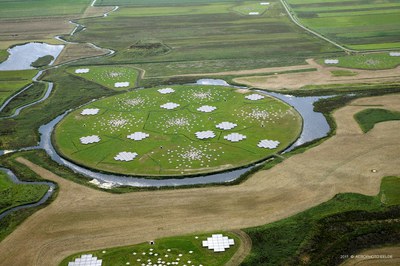Impact on radio astronomy
The ionosphere strongly affects the quality of observations of radio telescopes, as is with the case of the Low-Frequency Array (LOFAR). In this case, the radio waves are transmitted by natural radio sources and are strongly affected by refraction when pass through large-scale density structures in the ionosphere.
Refraction leads to strong lensing effects where the radio source appears, if imaged, to focus, de-focus and change shape as the density structures in the line of sight themselves move and change. Diffraction of the wavefront by small-scale density structures leads to variations building up in the intensity of the wavefront with distance from the scattering medium, due to interference between the scattered waves, an effect known as scintillation.
Ionospheric scintillations can be inferred from LOFAR observations and the results are made available in PITHIA-NRF. Comparison with data extracted from GNSS signal as it propagates through small-scale plasma density irregularities in the ionosphere, also available in PITHIA-NRF can be used for cross comparison and validation studies.

A small part of the LOFAR radio telescope with 6 substations. The circular field is 600 meters across. The full telescope very large and consists of 52 substations distributed all over Europe. (Credit: ASTRON / LOFAR)
For questions, please contact outreach@pithia-nrf.eu
